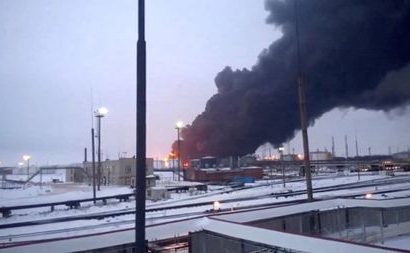
A recent Financial Times article described the situation perfectly: “The world’s largest gas traders are scrambling to secure liquefied natural gas tankers ahead of winter after sanctions on Russia following its invasion of Ukraine triggered a reshaping of global energy flows.” It’s a great time to be an LNG shipper.
The European Union has vowed to reduce its dependence on Russian natural gas by two-thirds by the end of 2022 and to import an extra 50 billion cubic meters of liquid natural gas (LNG).
Even before this decision, the companies that ship LNG globally had already been enjoying good times.
The UP World LNG Shipping Index—the world’s only stock index (with 18 constituents) focused on LNG shipping companies—highlights how good. In 2021, the index gained nearly 38%, and the UP World LNG Shipping Total Return Index, which includes paid dividends, gained 41.65%.
And now, conditions for the industry are getting even better. Let’s take a look…
Boom Times for LNG Shippers
This year, there is a highly unusual early rush underway by major producers of liquified natural gas looking to secure enough shipping capacity to transport the super-chilled fuel during the upcoming peak winter demand season.
In a normal year, the rush for ships usually takes place in late summer. But this year the rush has already kicked off, with many companies seeking to lower their shipping rates by agreeing to longer-term rental periods for LNG carriers.
This mad scramble for LNG-carrying ships translates to some LNG producers simply not being able to find ships to carry their cargoes.
It’s not surprising, then, that rates to charter an LNG tanker for a year are trading near their highest level in about a decade: about $120,000 per day! That is up more than 50% from a year ago, according to the leading provider of shipbroking services, the UK’s Clarksons.
Oystein Kalleklev, the head of two LNG shipping groups‚ Flex LNG (FLNG) and Avance Gas (AVACF)—told the Financial Times: “The market has exploded. It’s very hard to find any ships with length [of availability] in the market. It’s going through the roof.”
And the tightness may get even worse: new global shipping emission regulations kick in next year, which could put some older vessels indefinitely out of service.
Newer LNG-carrying vessels are being built, but most are still a few years away from being added to the global fleet. In fact, ships are already being scheduled for delivery in 2026 and beyond, and shipbuilding yards are booked through 2025. So, a LNG vessel glut won’t hit immediately—or all at once—if it comes at all.
If you do own newer LNG vessels, you could not possibly be in a better spot. One such company is the aforementioned Flex LNG.
Flex LNG
The company has a fleet of thirteen fuel-efficient, fifth-generation LNG carriers. Its fleet consists of nine M-type, Electronically Controlled, Gas Injection (MEGI) LNG carriers and four Generation X Dual Fuel (X-DF) LNG carriers built between 2018 and 2021. During 2021, it took delivery of its three remaining newbuild ships.
The aforementioned implementation of environmental regulations in 2023 and the EU expanding carbon trading to ships are bullish for Flex because of its very new and environmentally friendly fleet.
Meanwhile, some of its competitors may have to scrap some of their older ships or deal with higher costs under those new regulations.
Looking at its financial numbers, Flex’s TCE (time charter equivalent earnings) in 2021 was $74,500 versus its cash breakeven level of $43,700. And of course, charter rates are even higher in 2022.
The good news for Flex in 2022 is twofold: the company has already contracted 98% of its revenue for this year and, as I mentioned earlier, both the spot and term markets are improving.
Management says sequential earnings improvements are expected quarter over quarter throughout 2022, as strong LNG export growth coupled with relatively light newbuilding deliveries (only 27 vessels) should keep the market very tight.
Flex’s Big Dividend
Flex LNG’s dividend is $3.00 per share ($0.75 quarterly). The company’s dividend outlook seems clear for now. LNG is yielding 8+% and that’s here to stay (unless its share price rises more). The company has now paid out $0.75 per share for three quarters and management has clarified its dividend policy once again,
“We prefer having a stable dividend level, rather than adjusting up and down every quarter. This means that we sometimes pay out more and sometimes less than earnings, but over the longer term this nets out and we aim to pay out our full earnings over the cycle, as we have also been doing in the past.… Additionally, we — given our forward backlog, we also do expect less volatility in earnings than what we have seen in the past.”
With a healthy cash balance of $174 million, the dividend payout seems quite safe. And its high yield and rising stock price (up 121% over the past year and 42% this year to date) is a welcome sight in the current bearish market conditions.
FLNG is a buy anywhere in the low 30s per share.
This post originally appeared at Investors Alley.






